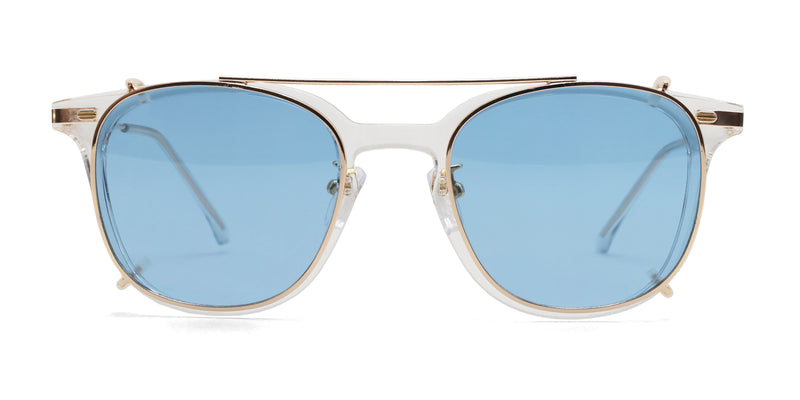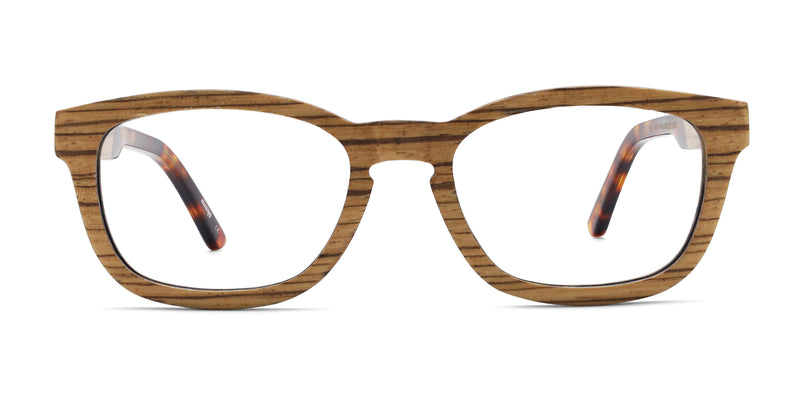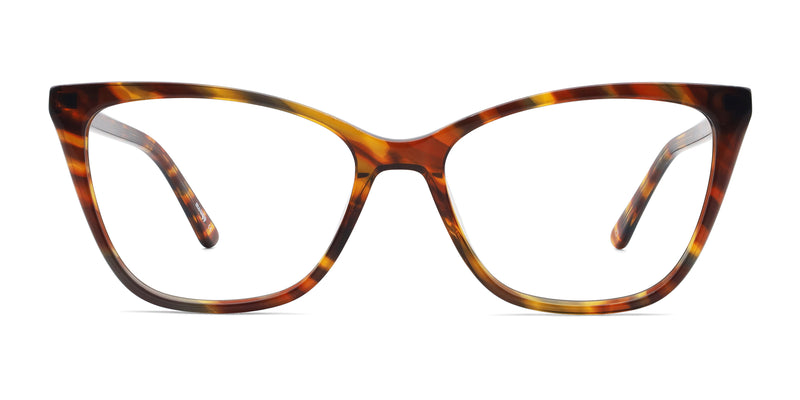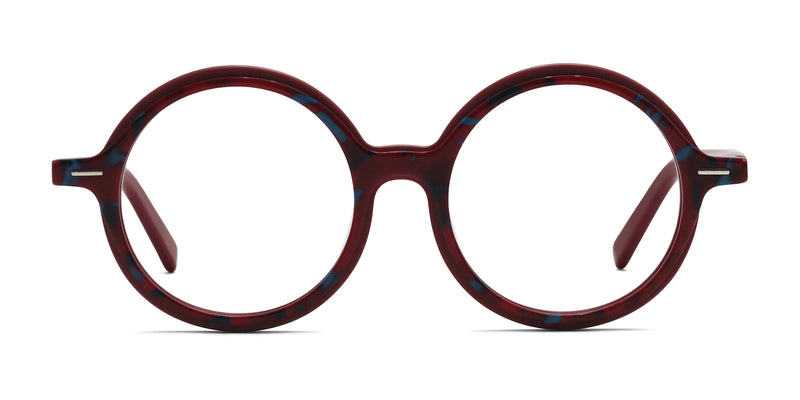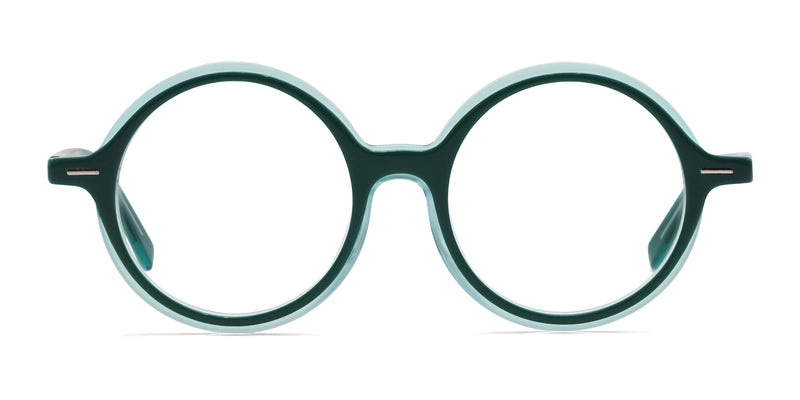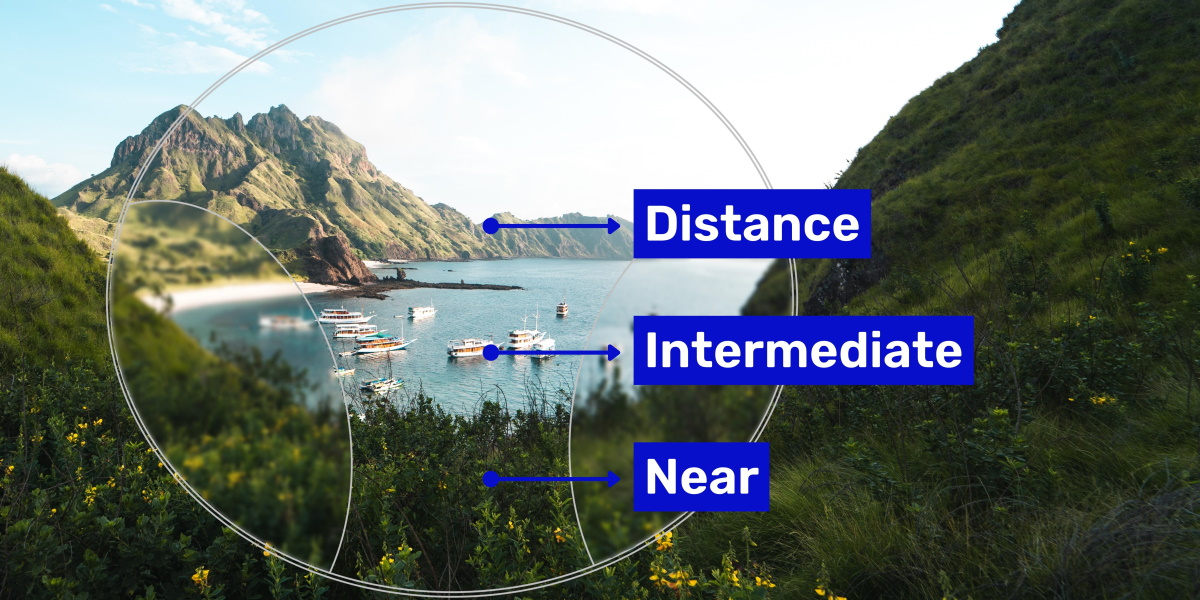What are progressive glasses?
Also referred to as multifocals, progressives are eyeglasses with multiple prescriptions in one lens. They cover close up, intermediate, and distance vision, eliminating the need to keep several pairs of glasses for different tasks.
Progressive eyeglasses are often prescribed to individuals with presbyopia, an age-related farsightedness that usually starts at the age of 40. However, anyone who needs vision correction in multiple distances can wear progressives, including children with developing myopia.
How do progressive lenses work?
Progressive lenses have three zones to help wearers see clearly at any distance. The top section is dedicated to distance viewing, which comes in handy when you’re driving or watching a movie. The middle section is used for intermediate distances, such as looking at your laptop or desktop. And finally, the bottom section is designed for up-close work, such as reading a book, sewing, or writing.
Perhaps one of the most appealing features of progressive lenses is the seamless transition between one zone to the other. Thanks to the gradual shift in lens strength, you’re less likely to experience any image jumping or distortions commonly associated with bifocals. And unlike bifocal lenses, they don’t have any visible lines between each zone (which tend to be distracting for some), so they look just like regular single vision glasses when you wear them!
How do I know if I need progressive glasses?
You may want to trade your old glasses for progressive ones if:
You have blurry vision at several distances
If you find yourself squinting to see things from multiple distances clearly, then chances are your current glasses are no longer sufficient for your present vision. Even with bifocals, you may still experience blurriness in various distances (especially when it comes to intermediate viewing). Opting for progressives will help you see clearly regardless of how near or far an object may be.
You have frequent headaches
Many experience regular headaches due to outdated prescriptions or undiagnosed vision problems. So if you think one of these reasons may be the culprit of your headaches, then you may want to schedule an appointment with your eye doctor for a proper diagnosis as soon as possible.
You already have multiple prescriptions
Are you both nearsighted and farsighted, but don’t want to keep switching glasses throughout the day? Then we highly recommend considering progressive lenses to simplify your routine while keeping your vision sharp at all distances.
What are the pros & cons of progressive glasses?
As mentioned earlier, there are many advantages to choosing progressive eyeglasses. For one, they’re great for individuals who have more than one refractive error, since they’ll only need one pair of glasses to cover all their vision needs. Second, you won’t get that overt (and not to mention age-defining) line that bifocals have, which make a lot of adults self conscious.
Lastly, they also give you a smooth transition from near, intermediate, and distance viewing, and won’t cause any ‘image jumps’ wherein objects abruptly change position when moving from one viewing zone to another.
But, there are a few drawbacks to progressive eyeglasses too.
While they do give you a sleek look overall, the lack of markers between each viewing zone does make it harder for some people to adjust to. The seamless transition you’re getting from progressive lenses will also cost you a bit more compared to other types of glasses too. Then again, you are getting three glasses in one, so the extra investment is totally worth it if you ask us.
How long does it take to adjust to progressive lenses?
The time it’ll take to completely adjust to progressives varies from one person to another, but can also depend on the strength of your prescription. For some, it only takes a few days for their progressives to feel like second nature, but for others, it can take up to a month to get used to.
But, we do have some tips to make the adjustment process a lot easier. By simply wearing them all the time, you’ll be able to adapt a lot quicker compared to wearing them occasionally.
It also helps to consciously train your eyes on where to look at as well – such as peering through the top portion when looking at something from a distance, focusing on the middle section when viewing a computer, and looking through the bottom region when reading a book or using your phone.
Is it better to get progressive or bifocal glasses?
This depends on you! While most people generally go for progressives for the polished look and effortless transition from near, mid, and distance viewing, some folks still prefer bifocals as the clear demarcations between each zone make it easier for them to adjust to.
Your lifestyle may also have an impact on your decision. If you do a lot of up-close work, bifocals may be more suitable for you since they offer a larger near vision segment. But if you spend a considerable amount of time on your laptop or desktop, then progressives will be more fitting since they have the appropriate power for intermediate viewing.
Lastly, you’ll also want to consider your budget too. Progressives are generally more expensive than bifocals as you’ll be getting three prescriptions instead of two, which naturally costs more to make.
Are bigger frames better for progressive lenses?
In general, progressive lenses will require bigger frames to accommodate all three prescriptions. That being said, it’s best to avoid frames that are too small to ensure that you’ll be getting the most out of each vision segment. In line with this, you’ll also want to be careful when selecting frame shapes like cat eyes and aviators, as some styles (specifically micro cat eyes and teardrop aviators) may cut off the bottom portion of your prescription, giving you a smaller zone for reading.
Luckily, you don’t have to sacrifice fashion or function when shopping for progressives, as we at Mouqy carry tons of practical yet fashion-forward frames that are fully compatible with progressive lenses. From timeless classics to off-the-moment styles, find your perfect match with us today.










